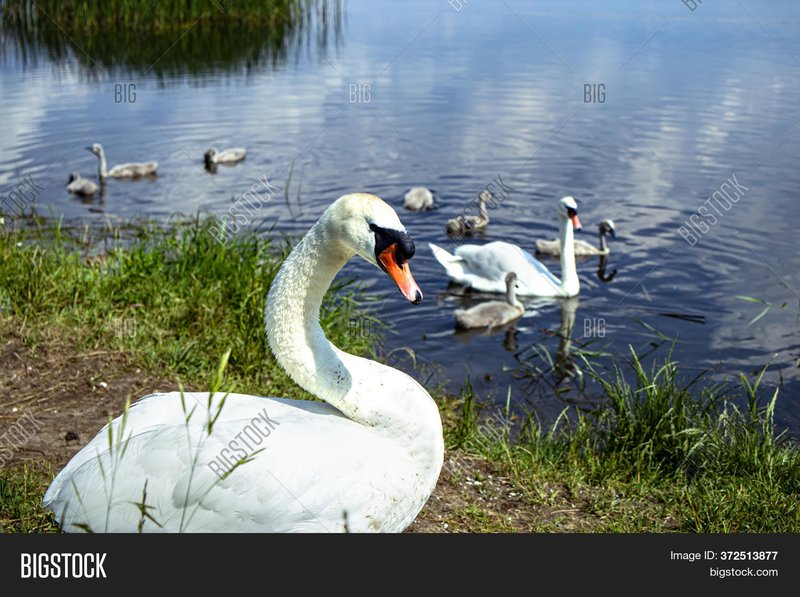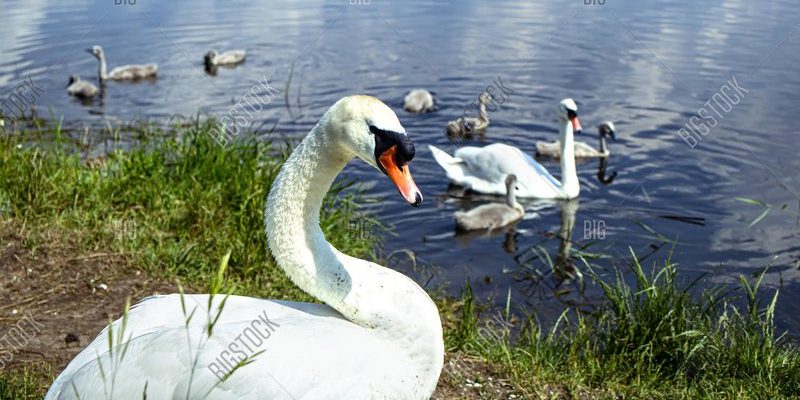
In this article, we’ll explore the fascinating ways swans adapt to their surroundings. From their physical features to their social behaviors, each aspect is a key to their survival. So grab a cup of coffee, get comfy, and let’s dive into the world of swans!
Physical Adaptations: The Perfect Design for Water
Swans are built for life on the water. Their long necks and streamlined bodies allow them to glide effortlessly through lakes and rivers. Imagine trying to swim with a heavy backpack—it’s tough! But swans, with their lightweight bones and strong muscles, can maneuver gracefully, whether they’re courting a mate or avoiding a predator.
Their webbed feet are another incredible adaptation. Just like flippers help a diver swim faster, swan feet act like paddles. This webbing allows them to push through water with ease, propelling them forward whether they’re searching for food or simply enjoying a leisurely swim. Plus, their feet are strong enough to help them walk on land, albeit a bit awkwardly!
These birds also have a unique ability to regulate their body temperature. Their feathers are specially designed to trap air, providing insulation against chilly waters. This keeps them warm, much like your favorite cozy blanket on a cold night. When it’s hot out, swans can spread their wings to expose their skin to cool off. This ability to adapt physically to temperature changes is crucial for their survival.
Feeding: Master foragers with a refined palate
Swans are omnivores, meaning they eat both plants and animals, which gives them a great advantage in their habitats. You might be wondering what they actually eat. Well, swans feast on aquatic plants, algae, tiny invertebrates, and even small fish. Their long necks come in handy here too! They can reach underwater to forage for food, something short-necked birds can’t do.
Interestingly, swans have a distinctive feeding method called “tipping.” When they tip forward in the water, their tails stick up, allowing them to access submerged vegetation. This cute image might remind you of a child looking for a toy at the bottom of the pool! Tipping efficiently helps swans find food without having to dive deep, saving energy and time.
What’s more, these birds are quite picky about their diet. They know which plants are nutritious and which ones aren’t. Swans often graze on water lilies or other vegetation that can be found near the surface. Their ability to adapt their feeding habits to the availability of food sources is a major factor in their survival.
Nesting Behavior: Building a Safe Home
When it comes to raising their young, swans exhibit fascinating behaviors that show their adaptability. Swans typically nest in secluded areas near water, selecting spots that provide safety from predators. Picture a cozy home with a view: that’s essentially how swans choose their nests.
They build their nests using various materials, including reeds, grasses, and feathers. This is similar to how we might gather blankets or cushions to create a comfortable space. By using local resources, swans ensure their nests are safe and well-camouflaged. This not only protects them but also makes it harder for predators to find their eggs.
Swans are also known for their strong pair bonds. They often mate for life, and both parents take turns caring for their cygnets. This teamwork increases the chances of the young swans surviving, as they have two attentive parents keeping watch for threats. Their family dynamics reflect their adaptability, as working together enhances their chances of success.
Migration: Journeying to Find the Best Conditions
Many swan species are migratory, traveling great distances to find better breeding grounds or feeding opportunities. Just like you might move to a new city for a job offer, swans make these long journeys in search of ideal conditions.
During migration, swans rely on instinct, navigating using the sun, stars, and even their sense of smell. Imagine taking a road trip without a map—swans have a built-in GPS! This ability to adapt to changing conditions allows them to find food, shelter, and mates wherever they go.
Their migration patterns often depend on the availability of water. For instance, when lakes freeze in winter, swans will fly south to find open waters. This seasonal movement is crucial for their survival, showing how well they adapt to their environmental changes.
Social Structures: Community Matters
Swans are social creatures, often seen in family groups or larger flocks. Their social structures not only provide companionship but also serve practical purposes. Picture a group of friends working together to tackle a project—that’s how swans operate as a community.
When swans gather in groups, they can share information about feeding areas and potential threats. This collective behavior is an excellent adaptation to help them survive in sometimes harsh environments. They communicate through various vocalizations, which can sound like trumpeting, honking, or soft murmurs. Each sound serves a purpose, whether it’s to signal danger or establish a bond.
Moreover, swans often engage in playful behaviors. Young swans, or cygnets, will chase each other around and practice their swimming skills. This social play not only strengthens family bonds but also prepares them for adult life. In many ways, their social structures mirror human communities, showcasing the importance of teamwork and relationships.
Swans are truly remarkable creatures, embodying the art of adaptation in every aspect of their lives. From their physical features to their social behaviors, they make the most of their environments. Whether they’re sipping food from the water’s surface or migrating to find the perfect spot to raise their young, swans demonstrate resilience and ingenuity.
Understanding how swans adapt to their surroundings not only highlights their beauty but also reminds us of the delicate balance in nature. Just as swans thrive by adjusting to their environment, we too can learn from their example. Embracing change and adapting to new situations is key to survival, whether in the wild or in our everyday lives. So next time you catch a glimpse of a swan gliding by, take a moment to appreciate all the little ways they’ve learned to thrive.

